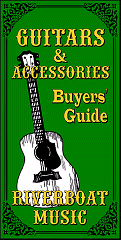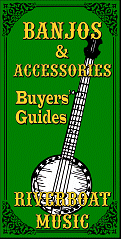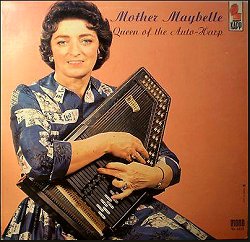
Note: This page is an archive, retained for the convenience of anyone who has bookmarked it in the past. The updated, corrected, and expanded version is now our "Introduction to Autoharps" article at HarpersGuild.com
| Please Read: How to Help Our Site at No Cost to You - Some of our articles contain recommendations for products we like and vendors we personally trust. Some of those vendors may pay us a very small commission if you click on a link and buy their products. This costs you nothing at all and helps offset the costs of what we do. So if we point you to something you decide to buy later, please make certain you come back through our site and click on the link directly. Thanks. |
| This Site is a Cookie-Free Zone - Except for discussion forums that you have to expressly register for, none of our pages use cookies of any kind. Some of the vendors we link to do, but that won't affect you unless you click on a link to their pages. Your continued use of this page indicates that you agree to our policy. For details, click here. |



|


Introduction to Autoharps
Autoharps are musical instruments that anybody can get a good sound out of, and some folks get great sounds. They're often misunderstood, sometimes reviled, but also sweet-sounding, and useful for many kinds of music, including Bluegrass, Folk, and even Rock and Roll.
 Autoharps have a long and colorful history, starting with their 1883 design by a Bavarian inventor named Karl Gutter, and subsequent pirating of that design by any number of manufacturers.
Autoharps have a long and colorful history, starting with their 1883 design by a Bavarian inventor named Karl Gutter, and subsequent pirating of that design by any number of manufacturers.
In the United States, ownership of Gutter's design was falsely claimed by four successive American companies, starting with C.F. Zimmerman and ending with the Oscar Schmidt company.
Autoharps (and several similar designs) were marketed chiefly to working families that couldn't afford a piano or music lessons, but wanted some source of music in the home.
The emergence of affordable radios put a dent in their sales for a time, because the radio was even easier to play than the autoharp.
 But string bands like the Carter Family continued to use them. And when the Carter Family's music hit the radio, there was a renewal of interest for a time. Sales of the Model 73 (shown in the ad to the right) jumped. That said, there wasn't enough interest to motivate the Oscar Schmidt company to update their instruments much.
But string bands like the Carter Family continued to use them. And when the Carter Family's music hit the radio, there was a renewal of interest for a time. Sales of the Model 73 (shown in the ad to the right) jumped. That said, there wasn't enough interest to motivate the Oscar Schmidt company to update their instruments much.
Yes, they eventually upgraded from 12 chords to 15, and they changed the shape of the buttons. But they didn't make any major changes until the 1960s. That left them open to unexpected competition from a Japanese manufacturer that traditionally made musical instruments for elementary school teachers, in the form of RBI's "Chromaharp."
The Chromaharp (below left) had several improvements over the old OS autoharps, including rounded edges that made it easier to hold. It quickly burst out of its intended education market into mainstream music instrument sales channels. This finally motivated the Oscar Schmidt company to reconfigure their own instruments.
The Oscar Schmidt OS-15 (above right) was OS' response to the Chromaharp. Compared to their older instruments, it had a more ergonomic shape, different string design, and several other changes.
Both companies soon introduced 21-chord versions, followed by a bunch of experimental instruments that were all discontinued by the 1980s. So you'll see some odd old pieces once in a while.
Today, the 15- and 21-chord versions similar to those shown above dominate both lines, though Oscar Schmidt makes a few higher-end 21-chorders with upgrades like solid tops, fine tuners, and - in one case - a chord bar arrangement that makes sense to musicians who understand the "circle of fifths."
Both manufacturers have shifted their manufacturing to various Asian sources, with the result that - to be honest - quality control on their student models varies widely. I have a Korean built Chromaharp 21 that is professional quality, but I also have 15-chorders from both companies that are strictly beginner instruments.
How to Hold
Early autoharps and the instruments that preceded them were typically played in the lap, like an Appalachian (mountain) dulcimer and most zithers. Country songwriter Cecil Null is given credit for popularizing the vertical position, playing it across the chest, pushing the buttons with the left hand and strumming with the right. This allowed string band players like him and Maybell Carter to step up to the microphone in barn dances and radio stations.

Today almost all autoharp players use the upright position.
You start out by getting your left wrist in the curved notch by the short strings, then bringing the autoharp up to your chest until you can comfortably reach your left arm around far enough to push the buttons firmly down on the chord bars. At the same time, you still need to keep the notch pressed against the inside of your left arm, probably a few inches up from your wrist.
That frees your right hand up to strum and pick the strings. Most people strum and pick the strings above the chord bars. The photo to the right shows John Sebastian, of the Lovin' Spoonful with one of his favorite autoharps. Notice how his left arm is supporting the notch while his left hand pushes the chord buttons. (This is a "Type A" fifteen-chorder, in case you wondered.)
How to Acquire
You CAN go to the store or online and buy a new autoharp. If this is your best option, and you're fine with a 15-chorder, I've found that Chromaharp's 15-chorder is generally more solid than the current batch of Oscar Schmidt's (entry-level) OS-15s. If you can afford to jump up to a 21-chorder, though, you might want to go for an Oscar Schmidt instrument - they give you more options for reconfiguring if you decide to go that way. If money is no object, Oscar Schmidt has some great "upgrade" instruments, and my friend Pete D'aigle offers a wide range of custom instruments.
That said, there are a lot of used autoharps on the market - especially on auction sites - at any given time. And you may find perfectly good instruments at a fraction of what the same thing would cost you new. You can also get "stung" with one that has missing felts or rusty metal parts. Worse case, it might be too smelly to keep in the house, and it is harder than you might think to get the smell out.
If you're used to working on instruments, an autoharp with a few minor problems won't scare you. But if you have to pay someone else to restore and restring it, you could wind up paying more than if you bought a new one.
It might seem like a minor thing, but if a used instrument has a case, it's likely to be less dusty, and that's a good thing to consider.
"Refurbished" Autoharps" - One user-friendly variation on the "used autoharp" scenario is the guys that pick up used basket-case autoharps cheap and rebuild them.
One popular rebuild option, is "diatonic" autoharps, usually used by folks to play Folk, Celtic, Bluegrass, or other roots music. If you've chosen the latter conversion, the rebuilder will replace the 15 or 21-chord button arrays with smaller arrays that only play a few chords (maybe enough to play most songs in the keys of D or G). Then they retune strings that would have been used for notes like Eb to notes that fit within the chords they've chosen to use. This doubles the notes you will use, the same principle as a 12-string or mandolin.
Update for 2024 - After I first published my first page about autoharps, I was inundated with questions from readers, so I kept researching and writing more articles to answer to most common questions. As you can see by the list below, I got a lot of questions.
Since 2018, I've been doing autoharp clinics at local music festivals. Usually I bring 12-14 autoharps, from all periods of production. After explaining and demonstrating, I pass them out to willing audience members and led them all in a few two- or three-chord songs.
Based on the number of musicians who stick around to ask questions, I think that the autoharp's biggest problem today is lack of exposure.
I've also done a lot more research on odd-ball autoharps and instruments that are sort of like autoharps, as well as different ways to make autoharps more useful for folks who want to use them in guitar- or banjo- or fiddle- centered ensembles.
As I do more conversions and repairs, I expect this list of articles to continue growing.
- Autoharp Factory Tunings - Describes the four most common chord layouts for new autoharps, and the two most common variations.
- Autoharp Buyers' Guide - Contains much of the content on this page, followed by more buying tips and a list of new Autoharps worth considering.
- Autoharp Pickups - Historic (failed) attempts and currently available products.
- Early Autoharps Video - This YouTube video shows some of the earliest autoharps, and explains how they evolved between the 1880s and the mid-1900s.
- Cleaning Dusty Autoharps Video - A short video with tips for quickly cleaning a dusty autoharp.
- Mountain Music, Bluegrass, and Autoharps - How autoharps were used in early string bands and "Mountain Music," and why you don't see them as much in Bluegrass or Folk.
- Making your Autoharp "Folk-Friendly" - Adding chords you need for songs in G, D, A, and E, while removing chords you almost never need like Ab and Bb7.
- What is a Diatonic Autoharp? - An overview of the way some people reconfigure their autoharps to play in fewer keys but with doubled strings for a richer sound.
- Autoharps for People with Short Arms - Suggestions for folks who find standard-sized autoharps inconvenient or painful to play.
- Autoharps for Children - Though long discontinued, two lines of autoharps made specifically for children occasionally turn up. Other suggestions are included as well.
- Is my Autoharp a Type A or Type B? - In 1968, following Chromaharp's lead, Oscar Schmidt reconfigured their instruments to be more ergonomic. They also changed the string attachment and removed the bridge. A late model A may still be a very playable instrument, but used model Bs tend to be in better playing condition just because they're newer. Either way, if you want to restring an autoharp, you'll find out that the strings are different between the two models. How do you find out which one you have?
- Early Autoharp Chord and Note Numbers What's with the weird labeling system on early 3, 4, and 5-chord autoharps, and why do they label both A and Bb as note number 6?
- How Much is my Autoharp/Chromaharp Worth? - How do you determine the value of an Autoharp or Chromaharp that has come into your position. Configuration and condition are the most important factors.
- Shifter Autoharps - Discontinued by 1926, these somewhat "overengineered" instruments allowed you to play up to 16 chords with just six buttons, plus some little levers you'd squeeze.
- Replacing Loose Felt on an Autoharp - The easiest Autoharp repair, often needed for instruments that have been stored in very dry areas.
- Chromaharp Bluegrass Reconfiguration - In the 1960s, the Chromaharp Bluegrass and the original Autoharp Appalachian 15-chord autoharps included D and A chords to make them a little more useful to Folk musicians. But they didn't include an Em chord bar. And playing in D was almost impossible, since the G chord bar was at the other end of the instrument. I moved the chord bars around to make them more useful and converted E7 to Em. Some more tweaks would probably be helpful, but this is a start on a more Folk-friendly instrument.
- Autoharp Precursors - Before the kind of autoharps we know and love came on the market, countless other instruments that also purported to make anyone a musician appeared. Most of these are mis-labeled "autoharp" when they appear on the used market, and too many folks have bought unsuitable instruments (or wall decorations) as a result. This is an overview of the major classes of these autoharp precursors.
I also picked up four very different autoharps I didn't really need because I wanted to do the projects I was reporting on myself. But time to spend on those projects has run out, so I won't be getting back to them for a while. In the meantime, I hope these articles help answer your questions about these under-rated instruments.
 Whatever else you get out of our pages, I hope you come away with some great ideas for "sharing the joy."
Whatever else you get out of our pages, I hope you come away with some great ideas for "sharing the joy."
And please stay in touch!
All material, illustrations, and content of this web site is copyrighted ? 2001, 2002, 2003, 2004, 2005, 2006,
2007, 2008, 2009, 2010, 2011, 2012, 2013, 2014, 2015, 2016, 2017, 2018, 2019, 2020, 2021, 2022, 2023, 2024 by Paul D. Race. All rights reserved.
Creek Dont' Rise(tm) is a participant in the Amazon Services LLC Associates Program, an affiliate advertising
program designed to provide a means for sites to earn advertising fees by advertising and linking to Amazon.com.
For questions, comments, suggestions, trouble reports, etc. about this page or this site, please contact us.
| Visit related pages and affiliated sites: | |||||
| - Music - | |||||

|
 |
 |

|

|

|

|

|

|

|

|

|

|

|

|

|

|

|
| - Trains and Hobbies - | |||||
 |

|

|  |
 |

|
| - Christmas Memories and Collectibles - | |||||
 |

|
 |

|
 |

|
| - Family Activities and Crafts - | |||||
 |

|

|

|

|

|



